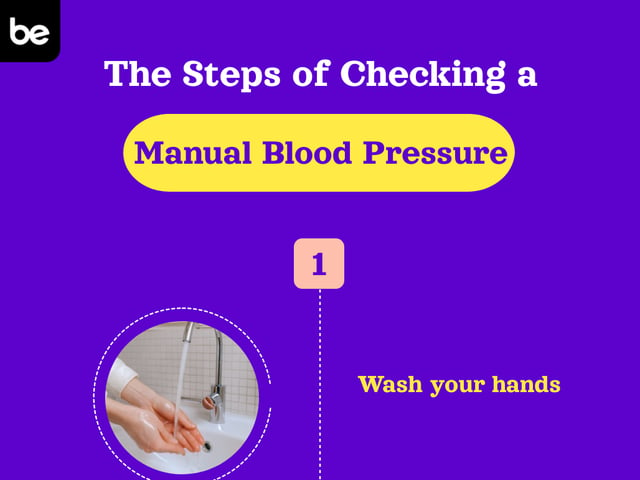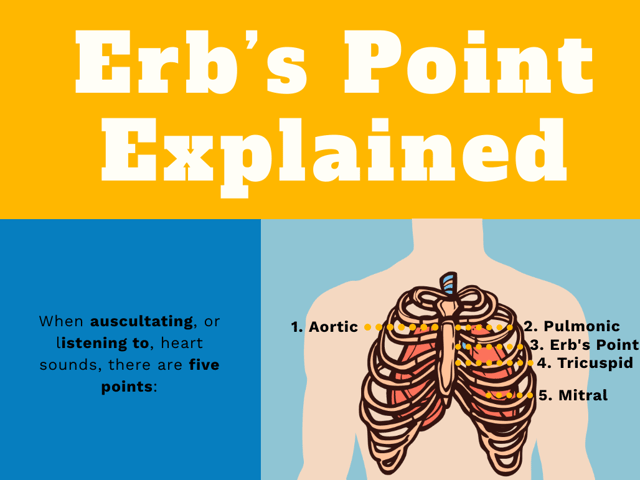
What Is a Medical Assistant?
Are you considering a medical assistant career? You’re not alone. Currently, there are 710,000 workers across the US with this role, and that number is only expected to grow in the coming years.
Everybody knows what nurses and doctors do, but not all of us want to commit to so much schooling when there are much simpler options to enter the medical field.
So, what does a medical assistant do, how do you get in, and is the job right for you? Let’s find out!
What Does a Medical Assistant Do?
Medical assistants are a common job in the healthcare field, but they are different from CNAs and other assistants. Medical assistants are typically responsible for both administrative and clinical tasks, often including:
-
Maintaining patient records
-
Helping physicians with procedures or exams
-
Preparing rooms and patients for examination
-
Performing front-desk tasks
-
Performing medical-related tasks (like administering medication)
The list goes on and can vary widely between jobs. Most often, medical assistants work in doctor’s offices, hospitals, or patient care facilities.
Medical assistants are the “jacks of all trades” in the medical industry, performing some tasks that nurses, EMTs, and receptionists may also be asked to perform. Primarily, their jobs can be broken into patient care, administration, and direct medical assistance.
Is Medical Assisting a Good Career?
A lot of metrics go into determining whether a career is “good”, and no career is right for everyone. However, here’s what we can tell you about medical assisting!
Salary and Benefits
Some medical assistants will be paid hourly and some will receive a salary. Across the US, the average medical assistant earns between $13 and $21 an hour, or $28,000 to $43,000 a year. Top earners in the field will earn up to $51,000, but most medical assistants in the US can expect around $17 an hour to start.
If you live in a state like Massachusetts, you are more likely to earn around $21 an hour within the first couple of years of your career. It depends widely upon where you live.
In most cases, medical assistants are full-time employees with benefits, usually including medical, dental, and vision insurance. They will have paid sick time, vacation time, and often, retirement benefits.
However, these benefits are heavily dependent on the job, so it’s best to look at medical assistant jobs in your area for more relevant information.
Requirements
In the US, you must be at least 18 years of age and have the legal right to work in the US to obtain employment as a medical assistant. You will also need a high school diploma or equivalent, and graduate from an accredited medical assistant training program.
Typically, this will require a completed externship along with coursework and a certification exam. You can check out a medical assistant practice test online to see what the exam might look like.
Upon passing, you will receive a medical assistant certification. From there, you will be able to apply for jobs as a medical assistant.
Some jobs will require an associate’s degree for consideration, and most employers in the field will at least prefer an associate’s degree in a related field. However, this is not always a requirement.
Job Growth
Believe it or not, medical assistants have some of the highest projected job growth in the healthcare industry. Currently, the field is expected to see a 23% growth rate over the next ten years, so get in while you can!
Large job growth typically leads to greater bargaining power, better job security, higher salaries, and more. If you get in during a period of high growth, you’re more likely to find a stable and rewarding career.
Job Satisfaction
Did you know that job satisfaction is one of the most important factors of happiness and even life expectancy?
Well, medical assistants are in the top half of jobs in the US, with the majority of workers experiencing job satisfaction. Many medical assistants work in their careers until retirement, meaning that the turnover rate isn’t a red flag in the industry.
How to Become a Certified Medical Assistant
Medical assistants handle patient care, medical equipment, medication, and other consequential responsibilities within an office or hospital. For that reason, medical assistants must have the training necessary for success in their jobs.
While courses and requirements may vary slightly, here’s what you need to become a medical assistant in the US.
Meet the Education Requirements
If you don’t already have a high school diploma or GED, this could take anywhere from three months to four years. Assuming you have one already, you will have to enroll in a post-secondary medical assistant training program.
The majority of these programs last for between 9 and 12 months, but some will last for two years. You can apply to any program you like or that fits your scheduling needs, but make sure it is accredited before enrolling.
Again, if you’d like to stand out from the competition, you can earn an associate’s degree in medical assistance from a community college near you, which will take two years.
Pass the Test
Once you’ve completed all necessary coursework, you will have to pass the medical assistant examination to obtain licensure.
To take the exam, you must either complete or be near completion (no more than 30 days away) of your accredited medical assistant course. Recent students must take the exam within 12 months after completion of their course.
The most popular medical assistant exam, the CMA, consists of four 40-minute segments for a total of 200 multiple choice questions, with optional 20-minute breaks between segments.
With the right test prep and attention to detail, you should be able to pass the test and receive your license as a medical assistant, and your wallet card should be mailed to you within six weeks after passing the exam. Prior to that, you will receive a digital badge to allow you to apply for jobs in the field.
Consider Specializing
There are four different types of medical assistant certifications you can choose from, including:
However, you don’t have to stop there. Once you obtain any of these certifications, you may consider specializing in a specific field.
Specialists in every field tend to have higher salaries, an easier time finding work, and higher job satisfaction. Possible specialties include:
-
Allergy
-
Cardiology
-
Dermatology
-
Obstetrics
-
Endocrinology
-
Gastroenterology
-
Gerontology
-
Neurology
The list goes on, and you can work in nearly any medical field of your choice. To specialize, you can take extra specialized courses either before or after you start in the field.
Although medical assisting is growing rapidly as a profession, you may still find steep competition when entering the workplace, especially without relevant work experience. Specializations can help you stand out from the crowd and stay in a setting that you prefer.
For example, if you want to work in a fast-paced environment, you may consider working in a hospital, especially in the emergency department. If you’re more suited for patient care in a slower environment, consider specializing in oncology or cardiology. You have options!
Ongoing Education Requirements
Like all medical jobs, certified medical assistants will have to meet educational requirements throughout their careers. Medical practices and standards are consequential, and they evolve rapidly.
As such, every two years, medical assistants will need to renew their licenses and meet certain educational requirements to do so.
They will be required to receive at least 60 recertification points, 30 of which must come from an approved educational sponsor. These continuing education units (CEUs) can be in any relevant field, including any courses you take to specialize within your career.
Don’t let these numbers intimidate you, as your renewed CPR license, which is also required every two years, will account for 12 of these points.
What Is the Course Like?
While it depends entirely upon the school and program, medical assistant courses will have some commonalities. However, if you’re taking a course at a community college, it will look a lot different from an online course through a private training company.
Either way, they should cover the same topics, just with a different structure. Some may offer online-only learning, in-person, or hybrid.
Generally, you can expect a mix of lectures followed by hands-on practical training. During the course, you will be taught how to:
-
Help patients feel comfortable (patient care)
-
Understand physicians’ instructions
-
Read and record medical histories
-
Record vital signs
-
Authorize drug refills as directed
-
Prepare laboratory specimens
-
Perform basic laboratory tests
-
Educate patients about medications and/or special diets
-
Prepare and/or administer medications (as prescribed)
-
Draw blood and give injections
-
Prepare patients for x-rays or EKGs
-
Remove sutures and change dressings
Of course, these are only the essentials. Different courses may go more in-depth on other medically related topics.
If you would like to prepare for the course in advance, then we recommend studying different medical terminologies and trying to improve your vocabulary. This is an easy way to take some weight off your shoulders during the course.
For any specialization or program that you’d like to enroll in, contact the educational provider for more specific information about the course.
Course Costs
While it depends heavily on the program, you could expect to pay anywhere from $1,000 to $15,000.
If you attend a community college, scholarships and grants could allow you to take the course entirely for free, or your tuition and fees could quickly add up to over $10,000 for a two-year program.
However, for a private certificate program, you should expect to pay between $1,000 and $3,000 in most cases. Some courses will also offer payment plans, which is something to look into if you need financial assistance.
Course Duration
Typically, the courses at a private institution will last for nine months, which is generally standard for the industry. If you’re going to a community college, expect the course to last for 12 months to two years.
How Do I Pass the Test?
The pass rate for the medical assistant exam is around 62%, meaning that it isn’t the easiest test in the world. For such a short course, students need to remember a lot of information, which leads to a relatively high failure rate.
If you fail the exam, you can take it again, but you will have to pay for a retest. For that reason, it’s best to focus in class, study hard, and pass it on your first attempt.
Assuming you pay attention in class, and spend time studying instructional materials like our study guide, you can rest assured that you’re coming to the test prepared.
Remember, it isn’t just a test you’re trying to pass. If you’re entering a new career in the medical field, then it’s essential to know what you’re doing.
Exam Costs
For members of the AAMA looking to take the CMA exam, the exam fee is $125. Non-members will have to pay $250. All expenses are non-refundable and, again, you will have to pay each time you schedule the exam.
It costs $90 to register for the NCMA, $155 for the CCMA, and the RMA exam fee is $120.
Apply for Jobs
Once you’ve obtained your license, it’s time to launch your medical assistant career!
As a newly licensed professional, we recommend taking every opportunity possible to stand out from the competition. Work on writing quality cover letters that highlight why you want to enter the field, what you’ve learned in your coursework, as well as any valuable skills you’ve learned elsewhere.
On your resume, list any applicable experiences or skills that may help you on the job. If you have administrative experience, customer service experience, or any medical experience, mention it! Even experience with a tool like Microsoft Excel may help you.
Once you have your license, look for jobs that meet your needs in your area and start sending out your applications today. You’ll be glad you did!
Start Your New Career
Now that you know all about starting a career as a medical assistant, the sooner you start, the better. The field is growing bigger every year, and skilled assistants are in increasing demand, so secure your spot while you can!
Stay up to date with our latest career and examination tips and feel free to check out some of our lessons for extra help!
Keep Reading

Medical Assistant test Blog
How to Do Well on the Medical Assistant Exam
If you’re planning to enter the medical assisting profession, passing a…

Medical Assistant test Blog
How to Check a Manual Blood Pressure
One of the most common tasks you will need to perform as a medical assi…

Medical Assistant test Blog
Erb’s Point Explained
What is Erb’s Point? As a medical assistant, you will do a lot of ausc…